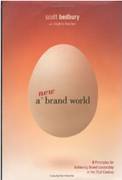Brand development
A firm's brand may be its most valuable and enduring asset which needs to be protected and developed, modernised and nurtured. BrandZ reported in 2010 that consideration of brand in the purchase decision had risen by 20 percentage points since 2005.
Markets are becoming more crowded and competitive and consumers have greater access to more information about products than ever before. Consequently, consumers have more choices and firms need to seek more effective ways of increasing brand awareness and, more importantly, creating brand loyalty. Therefore, one of the most important tasks in a brand's success is an effective branding strategy.

Brand development
Brand development is a marketing approach designed to make a brand more successful by changing it over time to ensure it remains popular and fashionable; and creating a brand strategy for the firm that is consistent with its mission, values, and strategic vision.
Brand development includes changes to key elements of the marketing mix such as the logo and product positioning, as well changes to micro elements such as stationery, typography, colour palettes and signage aligned with the brand's core values. The firm seeks to provide an attractive, unique, and relevant message to current and potential customers, that incorporates an element of positive emotional attachment. The brand's message must stand out from the 'clutter' of the market place and capture the consumer's attention. Large firms will often appoint brand managers whose have responsibilities for specific brands.
Brand development is measured by a brand development index (BDI).

Brand development index
A brand development index compares the percent of a brand's sales in a particular area with the percent of the country's population in that area; so measuring the infiltration of a product's sales, usually per thousand population in that area. If 100 people in 1,000 buy a product, the product has a brand development index of 10% in that area. A BDI indicates where significant groups of a brand's customers live and helps direct marketing efforts.

 A New Brand World , Eight Principles for Achieving Brand Leadership in the 21st Century (2003) by Scott Bedbury and Stephen Fenichell analyses why certain brands like Nike and Starbucks have succeeded while others have failed. In the following extract the authors attempt to summarise some of the elements that contribute to this success or failure:
A New Brand World , Eight Principles for Achieving Brand Leadership in the 21st Century (2003) by Scott Bedbury and Stephen Fenichell analyses why certain brands like Nike and Starbucks have succeeded while others have failed. In the following extract the authors attempt to summarise some of the elements that contribute to this success or failure:

A brand is the sum of the good, the bad, the ugly, and the off-strategy. If is defined by your best product as well as your worst product. It is defined by award-winning advertising as well as by the god-awful ads that have somehow slipped through the cracks, got approved, and, not surprisingly, sank into oblivion. It is defined by the accomplishments of your best employee - the shining star in the company who can do no wrong - as well as the mishaps of the worst hire that you ever made. It is also defined by your receptionist and the music your customers are subjected to when placed on hold. For every grand and finely worded public statement by the CEO, the brand is also defined by derisory consumer comments overheard in the hallway or in a chat room on the Internet. Brands are sponges for content, for images, for fleeting feelings. They become psychological concepts held in the minds of the public, where they may stay forever. As such you can't entirely control a brand. At best; you only guide and influence it.
One of the ways in which some products maintain a distinct difference is through packaging. Many of us recognise products by their packaging e.g. Kellogg's Corn Flakes. What surrounds a product is a space where the firm can promote all the little things that make the product different from competitors. Firms want people walking into a supermarket and notice the packaging from a distance. So, shape, colour etc. all 'appeal to the eye'. Consumers relate to some colours better than others and shape can be a major influencer in purchasing decisions. A change in any of these can be a boost to sales. It adds fresh life to something that might have been becoming 'tired', but mistakes can be costly.
Developing a brand name for a business
Developing a brand name may prove crucial to the success of a business.

Read the following articles which provide advice as to the choice of an appropriate name: